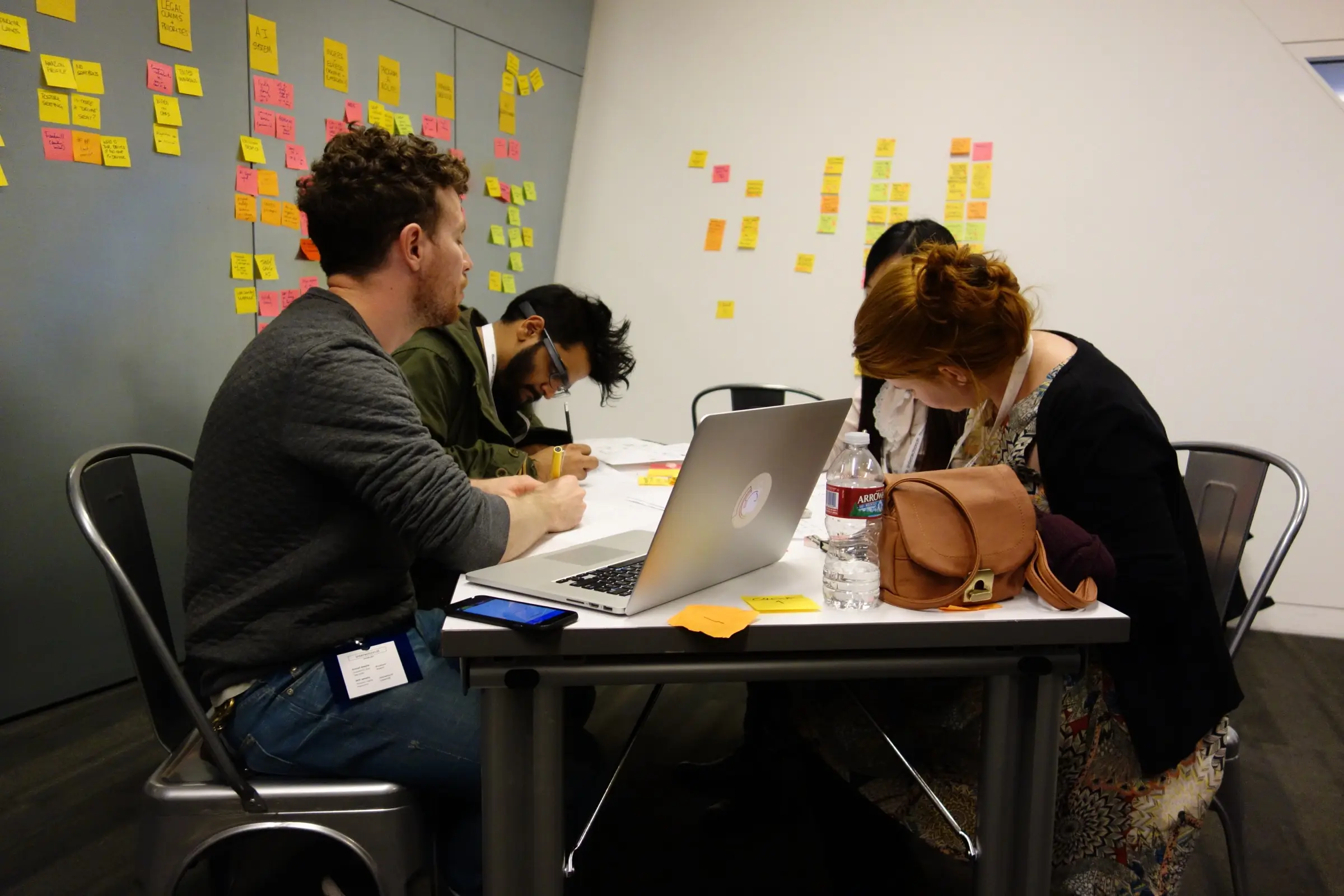
The Workshop
The Interaction Design Association invited Near Future Laboratory to introduce Design Fiction to the interaction design community by facilitating a Design Fiction workshop. In this case, we decided to imagine the self-driving future from a design and interaction design perspective by creating a Design Fiction quick-start guide for a fictional self-driving car.
Summary
Imagining a future of self-driving cars using the humble quick-start guide as a container of the implications and contingencies of the autonomous way of life.
Written By: Julian Bleecker
Semantic Tags AUTONOMOUS VEHICLESDESIGN FICTIONFUTURE THINKINGSELF-DRIVING CARWORKSHOPS
ixda-qsg-self-drivign-carThe workshop provided a hands-on introduction to Design Fiction and its methodologies and principles within a professional learning and development context. This workshop was conducted at a time when Design Fiction was still a naescent concept, while many engaged interaction design and user-interface design professionals were focussed on legacy approaches and practices.
The feedback from participants were positive. Many participants began to integrate the principples and value of Design Fiction into their own organizations. The PDF of the Quick-Start Guide continues to be one of the most downloaded artifacts on the Near Future Laboratory Shop of Futures Artifacts.
A few key practical facilitation insights came out of this workshop:
Doing ‘worldbuilding’ ahead of the workshop to provide some context as to the state of the world was vital. Several volunteers worked in the weeks ahead of the workshop to create advertisements, news articles and such that were put up on the wall, and reviewed at the start of the workshop to open the discussion as to the world we were travelling into.
Having a ‘flat plan’ as a guide pre-portioned into sections one might expect to find in the Quick Start Guide offered just enough structure to achieve the desired outcome, which was enough of the material contents of the QSG such that a team could then go away post-workshop and refine that guide itself as a production project rather than a purely creative exercise. That is, our success state was to have all of the contents and then we could go back to the studio and do the final production, layout in InDesign, refine the graphics, do type and layout treatments, etcetera.
It’s not enough to just speculate in words: creating the actual material contents, no matter how peculiar, brings the imagination to life in a grounded way. Just doing scenarios, or writing them out, or describing them is insufficient. Getting comfortable materializing the imagination in terms such as one might find in a material cultural artifact like a manual, or news article is critical.